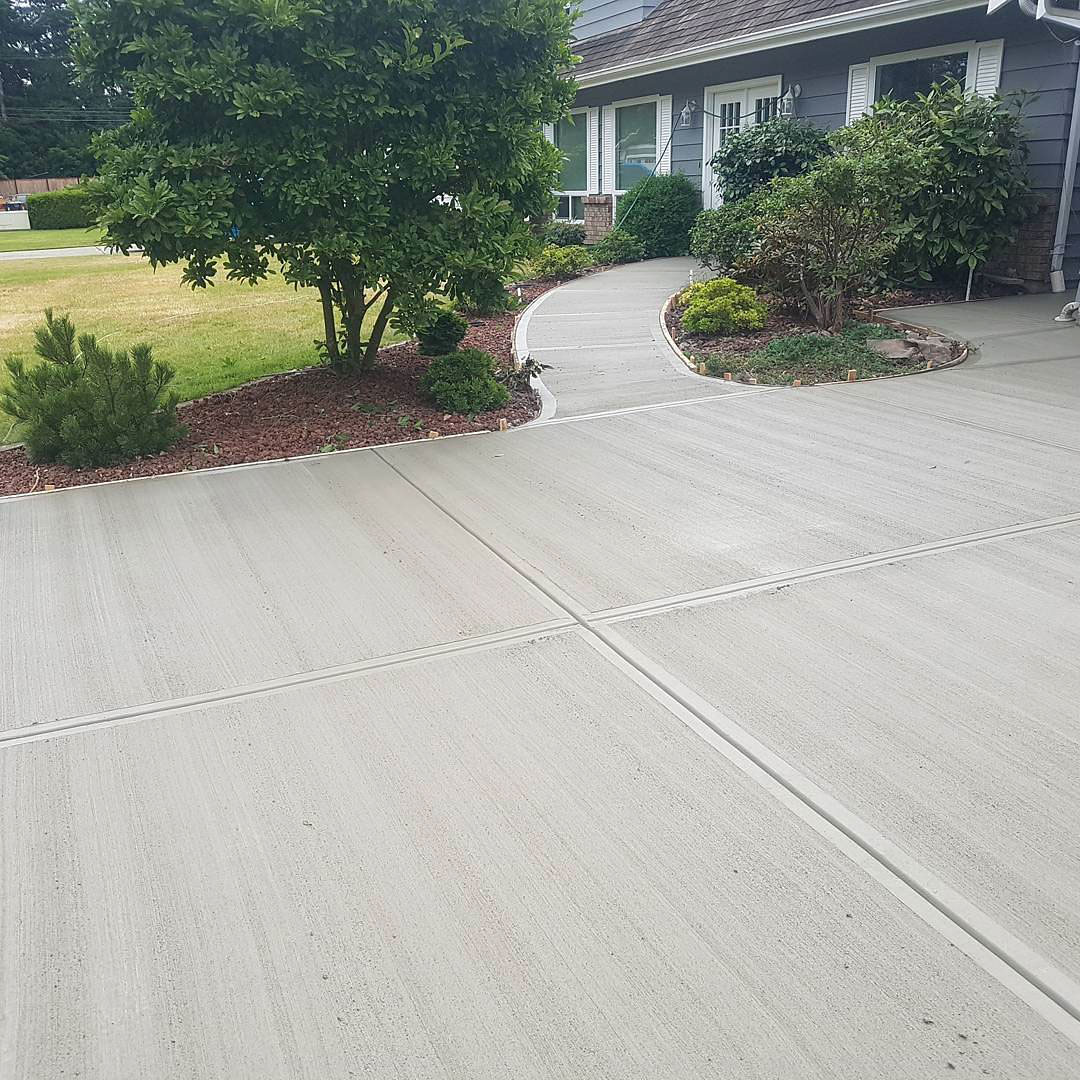Getting Started with your Concrete Project
Here are some things to think about as you are planning for a new concrete driveway or patio.
- Site Specifics – Please let us know of any previous issues with cracking, tree roots, drainage problems, difficult neighbors (yes really!) gas lines, water lines, in-ground electrical, lawn sprinklers, or anything you feel we should know before quoting and or starting your project. This information helps to prevent surprises later on.
- Local by-laws and Building Codes: Building codes differ from city to city and can change from year to year. We highly recommend checking with your local planning department to make sure your proposed concrete project meets local municipal guidelines. Please note: While we have many years of experience working with concrete in the Lower Mainland municipalities: during our high season we will not have time to check if there any been any recent changes. It will be up to you the homeowner to make sure that any permits (if required) are applied for and posted on site. Many municipalities ARE now requiring inspections for driveways.
The Seven Basic Steps for Concrete Patio or Driveway Project
1. Breakout of Existing Concrete – In this stage we breakout any existing concrete material. The concrete is separated from rebar (if present) and loaded out into bins and then recycled into fill for roadways, and or reused in base prep on new slabs. Old concrete is the perfect material for filling in low areas. We like to reuse as much material as possible to limit our environmental footprint.
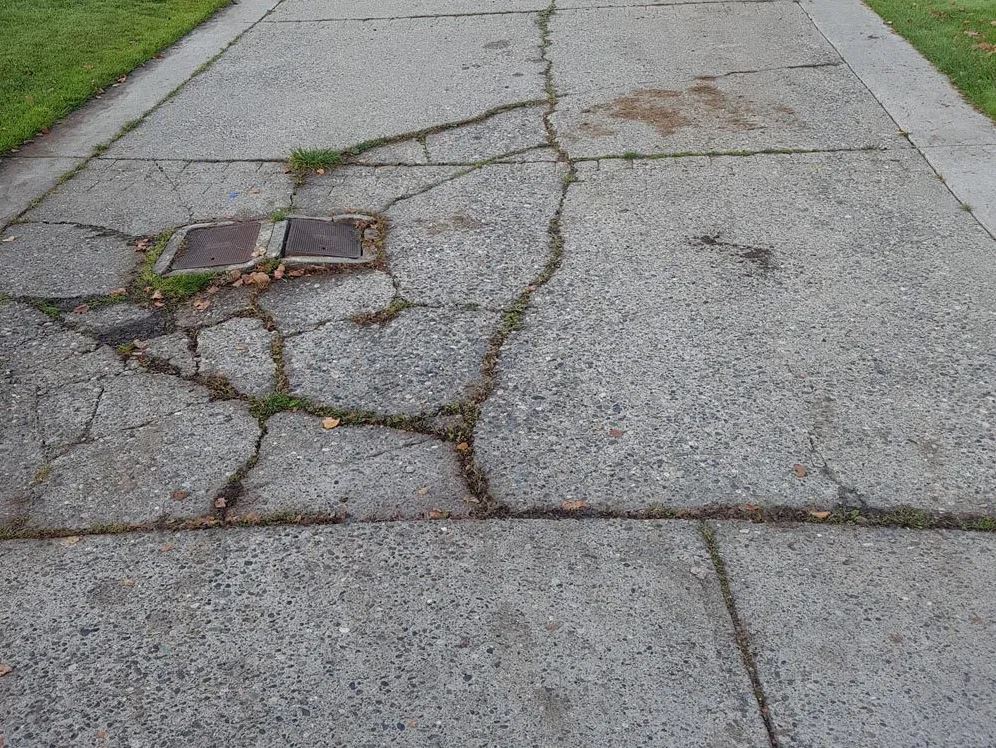
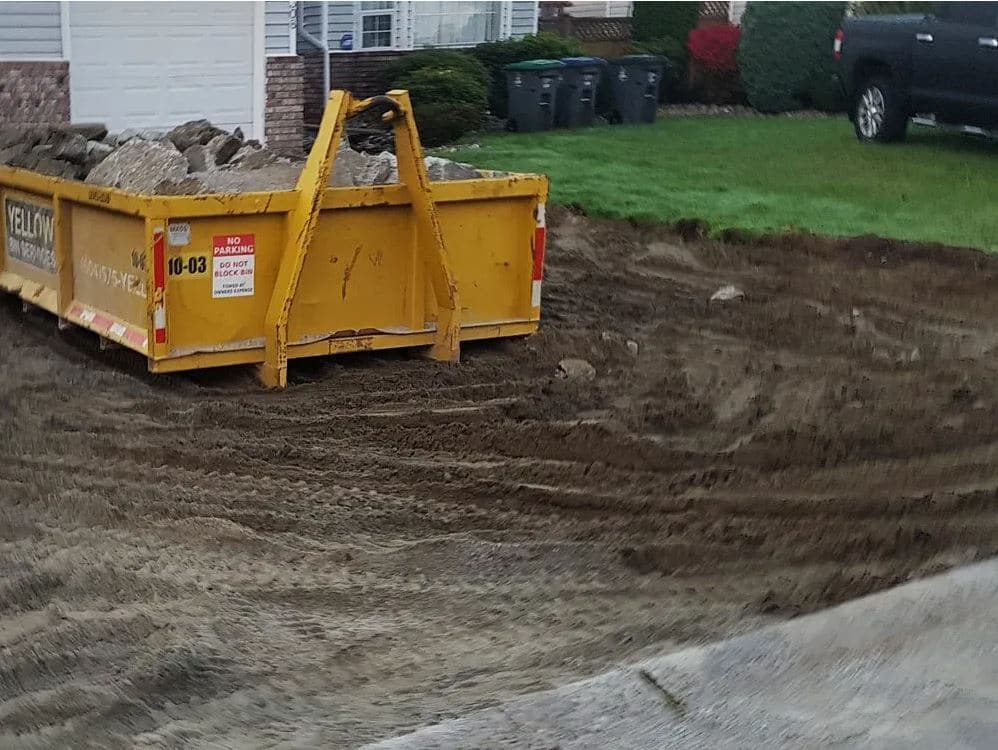
2. Ground Preparation / Concrete Base – This is the most important part of the process and is where we take steps to fix any issue from the previous patio or driveway. In most cases, we bring in additional material ( road base type material or 3/4 in crush rock) for filling low areas. After the ground is leveled a compactor is used to press the material in tight. Most problems with driveways or patios can be traced back to not having the correct amount of the right type of fill or not having it compacted correctly. We make sure your ground preparation is done right.
3. Forming for Concrete: For standard driveway and patio slabs, forming is done with 2″ x 4’s: if the slabs will need to support heavy equipment then 2″ x 6″ forming may be recommended.
4. Placing Rebar: Rebar helps give concrete strength and durability. Properly placed rebar will help prevent cracking and if cracking does occur will prevent any surface indifference and will maintain the integrity of the slab.
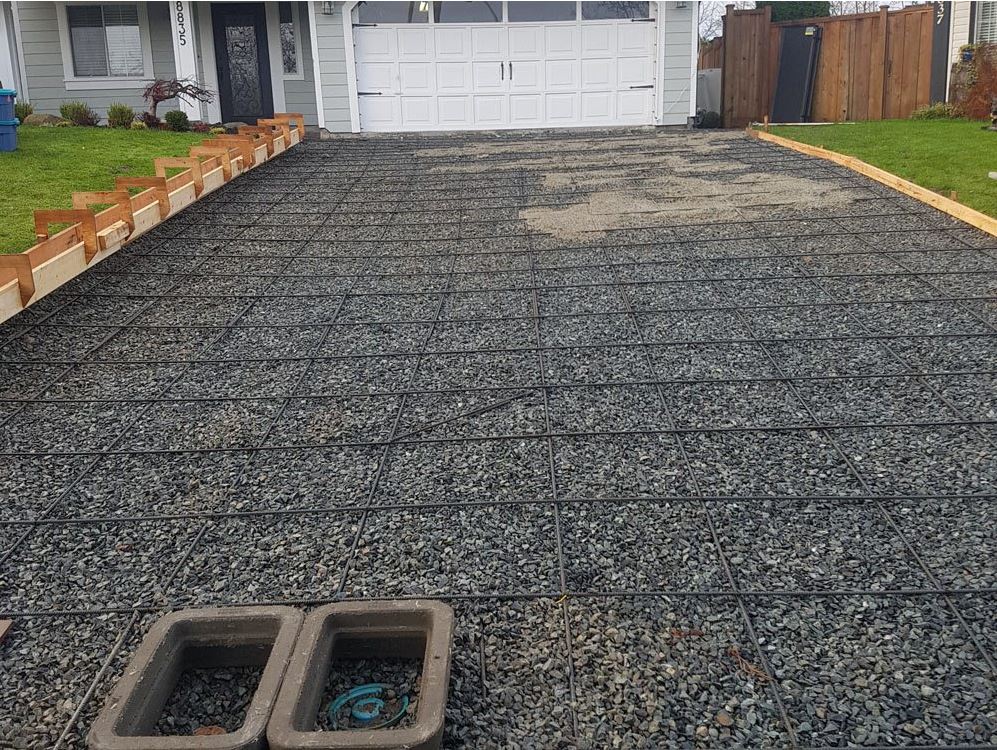
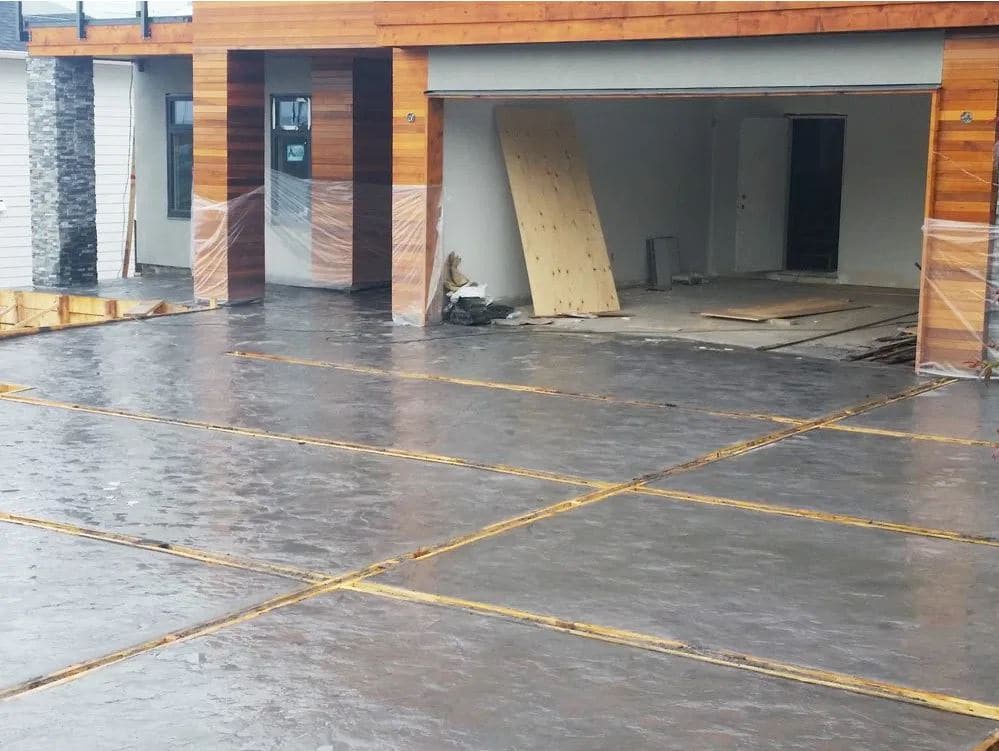
5. Pouring Concrete: It is important to pour the concrete at the correct consistency. e. Some companies will add too water making it easier to place resulting concrete is not as strong and may suffer from later from surface cracks and shrinkage. By using only just enough water to make the concrete malleable enough to pour we ensure the strength of your slab.
6. Removing Forms: Once the concrete is set, we can remove the forming materials the following day. The time for the concrete to set can take from a few days in the summer to several weeks in Winter. Once the forms have been removed the homeowner can begin any landscaping they want to add around the slab, generally 1-2 days after the concrete is poured.
7. Curing: While concrete may set in a day or two, curing takes longer. In extreme temperatures steps must be taken to help the slab cure properly. On hot summer days, a light misting of water may help prevent the concrete from curing too quickly. It prevents the water in the mixture from evaporating completely, this will also help prevent surface cracking. In winter months outdoor concrete may need to be covered. Covering can affect the surface colour and finish but ensures the proper curing and overall long term strength of the concrete. For driveways – we recommend waiting at least 2 weeks before driving a vehicle on the slab.
Concrete After Care
In some cases, we will recommend sealing your concrete. We recommend removing any stains (oil, grease, etc) as soon as possible. We strongly recommend against salt and other deicing chemicals. While they may make your concrete less slippery be aware that they can contribute to surface cracking.
What about Cracking?
All our slabs are designed with control joints / cut lines and reinforced with rebar. The cut lines or sawcutting is to force the concrete to crack on those “control joints.” We are using those lines as a guess on where the cracking can occur. Cracking is natural, the surrounding ground moves and change in temperatures cause contraction and expansion of the slab. This will not affect the integrity of your slab.

Request a FREE Estimate
Get a quote today for your concrete project.
If it needs fixing, we have a concrete solution.
If you dream it, we can “concreate” it.
If you dream it, we can “concreate” it.
No matter where you live across the Lower Mainland , whether you need work done on your home or business, no matter how big, small, simple or tricky your concrete job, our General Concrete team is up for the challenge! We work quickly. We work to budget. And we have the specialized tools, the expert knowledge, the highly-trained skills, and the can-do attitude to make your concrete job not only functional, but fetching.
Contact General Concrete, your Lower Mainland/Fraser Valley full service concrete company, today.
Call 604.341.4583 or email [email protected].

